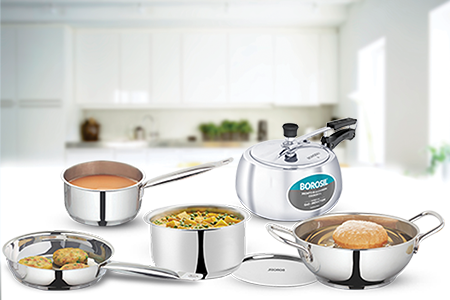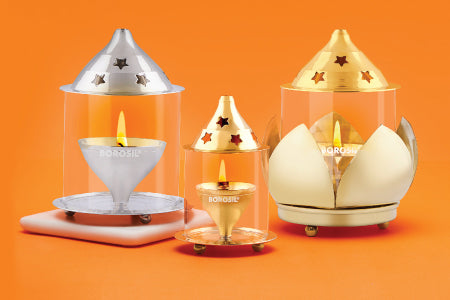
Pesarattu Recipe
Have the Classic Andhra Breakfast Staple with a Pesarattu Recipe
Pesarattu, or mung lentil crepes, are a nutritious and satisfying breakfast staple that can be enjoyed at any mealtime. Made from a simple batter of ground rice and soaked mung beans infused with vibrant spices, these homemade moong dal dosas are a breeze to prepare. Just pour the batter onto a hot skillet and create thin, flavorful pancakes. Serve them alongside ginger, upma, or coconut chutney for a delightful meal experience.
Not only are pesarattu dosas delicious, but they're also a healthy choice. Vegan-friendly and packed with protein, they can even be made gluten-free by omitting the asafoetida. While it may take some preparation to make them from scratch, the lip-smacking taste makes it all worthwhile.
Explore the sections below for a detailed breakdown of the ingredients needed to make this traditional dish and step-by-step cooking instructions. Let's dive in and enjoy the culinary delights of pesarattu dosas!
Pesarattu Ingredients: Comprehensive List
The ingredients are a significant part of any recipe, and their quality and quantity ensure the dish's taste. Ensure you always include the best protein and other ingredients in pesarattu to satisfy your belly. Following are the ingredients you will need to make the Pesarattu recipe.
• ½ cup of whole moong beans
• 2 tablespoons of rice
• ½ to 1 teaspoon of chopped green chilli
• 1 inch of ginger
• 2 tablespoons of chopped coriander leaves
• 1 pinch of asafoetida
• ½ teaspoon of cumin seeds
• ½ to ⅓ cup water
• Salt as per taste
• Oil or ghee
How to Make Pesarattu: A Step-by-Step Process
Make pesarattu through an easy process that ensures a great and delicious result. Go over the steps below to learn how to make wholesome and crispy Pesarattu and enjoy it with your friends and family. You can make, store, and enjoy this dish whenever you are craving something light and healthy.
Step 1: Make the Moong Dal Batter
Start with rinsing the whole moong beans and the rice a couple of times in the water.
Soak them overnight in a bowl for at least 4-6 hours.
Drain all the water and add the rice and moong beans into the food processor or blender.
Add the chillies, coriander leaves, ginger, cumin seeds, water, and salt into the mixture and then blend or grind them to a fine and smooth batter. The consistency of the batter needs to be similar to that of a dosa batter.
Step 2: Make the Pesarattu Dosa
Smear some ghee or oil with a paper towel on a large skillet or a cast iron tawa.
Pour the moong dal dosa batter onto the griddle using a ladle or a big spoon and spread it around in a round shape.
Keep the heat medium-low or low when spreading the batter, and sprinkle some chopped green chillies, onions, and coriander leaves on the batter.
Press the pesarattu ingredients, flip the dosa completely over, and cook the second side for a minute.
Fold the dosa in half like a crepe and repeat the points for the remaining batter.
Serve the pesarattu with a side of coconut or ginger chutney.
Expert Tips on Making the Pesarattu Dosa Recipe
Below are some tips and pointers you can use while making pesarattu.
Prepare the dosa with split green gram, sprouted, or even yellow moong. But you must ensure you soak the yellow moong for at least 1-3 hours.
You can also add 2-3 tablespoons of rice flour instead of rice grains in the batter. Or, you could make it without rice, but the dosas will not be as crispy.
Add 1-2 tablespoons more water if your dosa batter becomes too thick, and add 1-2 tablespoons of rice flour if it becomes thin.
Do not add asafoetida to make a gluten-free pesarattu.
You can also use substitutes instead of rice flour, such as ragi flour, idli rava, gram flour, or jowar flour.
Do not spread oil on your pan if it's non-stick before you put the dosa batter on it.
Oil is not required with a non-stick pan and your dosa will still look beautiful and appetising.
Conclusion
Making the pesarattu dosa recipe is very easy. You simply need all the ingredients, turn them into a batter, and make the dosa. At the same time, the consistency of the batter is an important factor that influences how crispy the crepes will be. If the quantity of any ingredient becomes a little more or less, it will affect how your pesarattu looks. Pesarattu does not have many steps but has many significant aspects that you must be careful with. These are some of the things that will determine how your dosa ends up tasting and looking.
FAQs
1. Can I use any other flour instead of using rice flour?
You can use ragi, jowar, or chickpea flour instead of rice, but these flours will also affect the flavour of the pesarattu and leave an aftertaste.
2. How long should I soak the whole green mung beans or the split yellow beans?
The soaking time for both of these mung means is different. The green mung beans require an overnight soak or at least 4-6 hours. The split yellow mung lentils can be soaked for 1-3 hours. The less time you soak the lentils, the crispier your dosa will be.
3. Can I skip rice completely when making pesarattu?
Putting rice in the recipe is not essential if you don't prefer it. But it gives pesarattu a crispy texture, so it is recommended that rice be kept in the ingredients.
4. Can I refrigerate the moong dal dosa batter for some time?
You can refrigerate the batter for a day or two but know that the taste and texture will not remain the same. So, when you try to make pesarattu after storing its batter for some time, ensure that you check the consistency of the paste. Change the batter’s consistency if required to get the desired results.





















